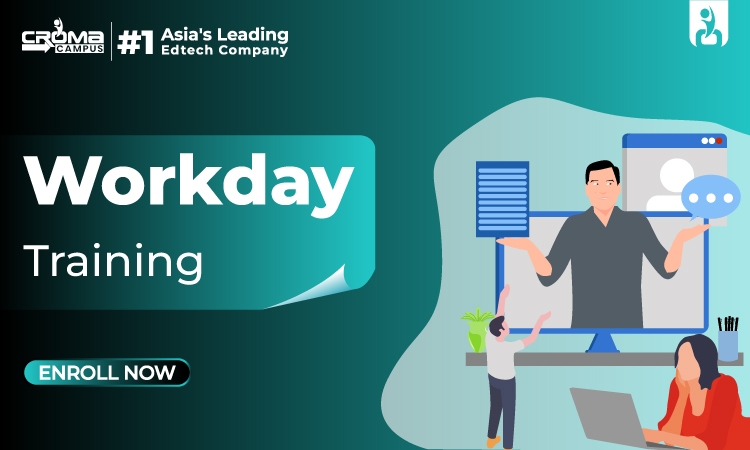
Introduction:
One of the most potent capabilities of the Workday ecosystem is the Workday Integration that enables a smooth data flow between the major Workday applications and external enterprise systems. In the current interconnected business environment, the HR, finance, and planning departments are required to collaborate in real-time. Workday integration instruments make this task easier by giving businesses a secure, scalable, and automated way of sharing data fast.
Core Elements of Workday Integration:
Workday Integration is designed with several layers of tools and technologies for its adaptability and stability. The components provide the possibility for both technical and non-technical users to come up with integrations and manage them in an efficient way. The components, in fact, are a comprehensive platform of different use cases from quick file-based implementations to enterprise-grade data orchestration pipelines. To further know about it, one can visit Workday Training. Here are the core elements of Workday Integration.
Workday Studio: Workday Studio is a potent graphical developer environment that is based on Eclipse and is used for developing complex integrations that need multiple data sources and transformations.
Enterprise Interface Builder (EIB): A very simple and user-friendly, configurable instrument to generate easily local and remote integrations by using Excel or XML data formatting.
Workday Web Services (WWS): REST and SOAP APIs are available to developers for programmatic data access and manipulation in Workday.
Cloud Connect: It is a group of pre-built connectors by Workday for the most common external systems, like, for instance, ADP, Salesforce, or providers of benefits.
Core Connectors: The pre-configured templates that are normally customized according to specific business rules and used for system-to-system integrations.
Workday Integration Patterns:
Workday has various integration patterns, which rely on the direction and timing of data exchange. By understanding these different types, enterprises can properly conceive the integrations that support their operating model. It is crucial to choose the proper integration type for the balance of performance, accuracy, and the use of resources to be achieved.
Inbound Integrations: This is the flow of data from the external systems into the Workday, for instance, the loading of employee data from a recruiting platform.
Outbound Integrations: In this case, data moves from Workday to other systems. For instance, sending payroll data to a payment processor.
Bidirectional Integrations: It is a real-time synchronization where information can flow in either direction between systems.
Batch Integrations: These are usually scheduled daily or weekly, and data transfers of large datasets are done periodically.
Real-Time Integrations: This is the situation when data is exchanged immediately as a consequence of certain business events or API calls.
Benefits of Workday Integration:
Workday integrations that are implemented effectively produce business and operational benefits that can be measured. One of the benefits is that it gets rid of the silos of data and thus ensures that there is no interruption in the flow of information between the systems. Workday Integration is therefore a key mover of digital change in the areas of HR, finance, and operations because of these benefits. Many institutions provide Workday Certification courses, and enrolling in them can help you start a promising career in this domain. Here are some significant benefits of Workday Integration.
Data Consistency: Keeps all business systems open to the same correct and updated data.
Operational Efficiency: The process of manual repetitive data tasks is done by the machine, thus the error is reduced and time is saved.
Scalability: New systems or any changes in processes can be easily accommodated as the organization grows.
Real-Time Insights: Facilitates the use of synchronized analytics and reporting across financial and HR modules.
Compliance and Governance: Helps in the recording of the audit process and ensures that data sharing follows organizational policies.
Future of Workday Integration:
The integration of Workday in the future is largely determined by the use of automation, AI, and API-driven architectures. Workday is constantly upgrading its integration framework to facilitate event-driven and low-code automation models. These innovations are enabling Workday to be more integrated with one another quickly, in a less onerous manner, and in a smarter way of automatically recognizing errors. There are a few emerging trends, such as the following:
Workday Extend: This enables developers to create custom apps that integrate natively with Workday.
API-First Strategy: This strategy facilitates real-time connectivity with other SaaS tools.
AI-Powered Integration: Insights that lead to the identification of data anomalies and the automation of the issue resolution process.
Conclusion:
Workday Integration should not be considered merely as a technical connection; rather, it is a strategic capacity that brings together finance, HR, and operations under a single digital ecosystem. Businesses can, therefore, through the use of such tools as EIB, Studio, and Cloud Connect, ensure that their systems are working together with little manual intervention. Many institutes provide the Workday Finance Training, and enrolling in it can help you start a career in this domain. As Workday progressively moves towards more intelligent solutions, the organizations that decide to invest in automation will realize the benefits of operational efficiency and data governance. Thus, have a competitive advantage over the rest.
